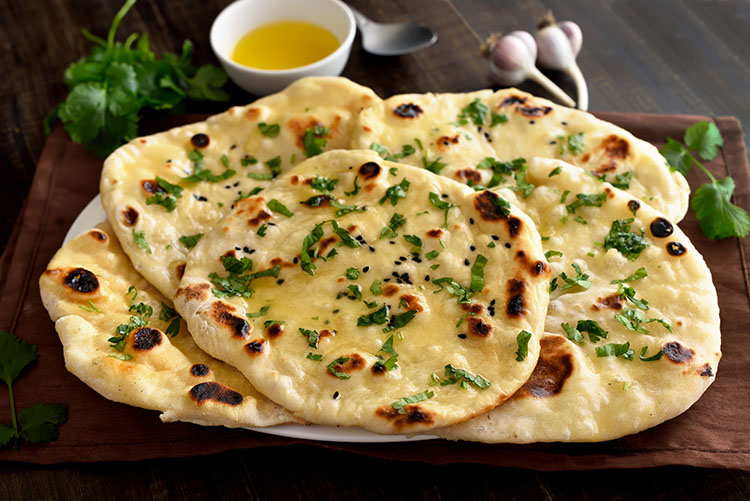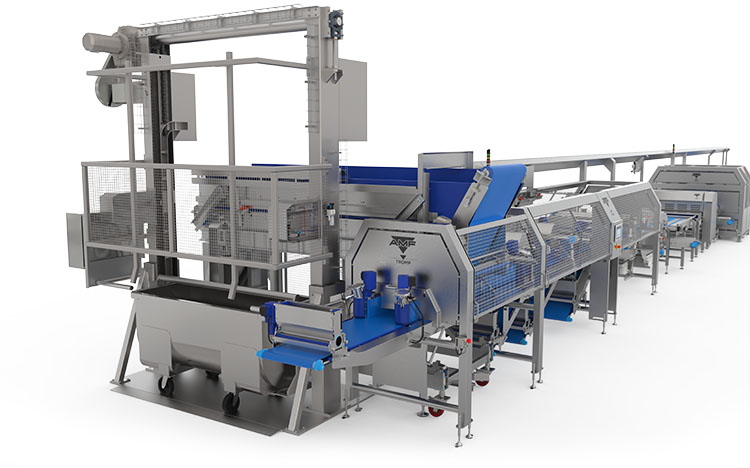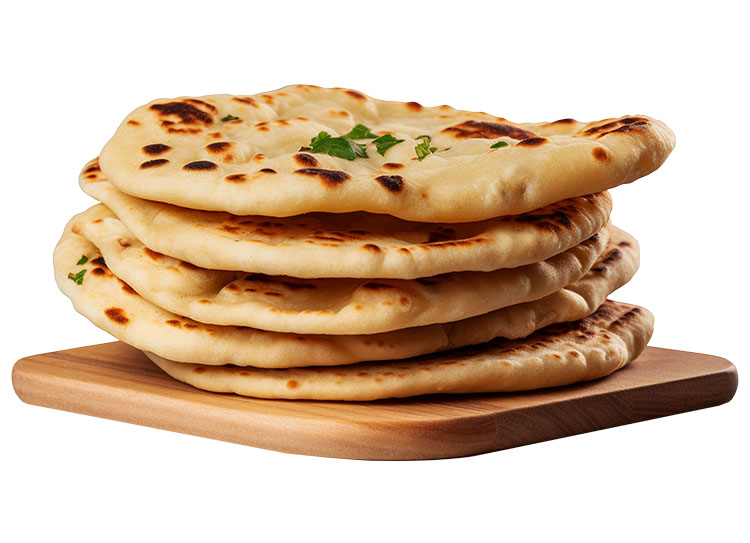
Laborious leavening and skill scarcity made naan bread a nutritious yet elusive delicacy for centuries, first reserved for India’s royalties and nobility. As flatbreads grew to become a valued staple worldwide, technology has provided answers to all its production challenges, to match traditional handcrafting techniques.
Naan bread is made with flour, water, salt and yeast, to which other ingredients are sometimes added, such as oil or butter. Yeast is traditionally used, but it can also be made without it. A lot has changed since the first historical recording of naan bread, around 1300. It was first cooked in Dehli’s Imperial Court. Mentions of it were found some 200 years later, when it was still reserved for the menus of royalties, because of challenging leavening techniques, and ingredient scarcity. In the 2000s, naan now belongs to everyone; the bread is enjoyed as a side to flavorful dishes, everywhere in the world – in ethnic restaurants, and it has its own established seat in supermarket aisles, too.
Technology was developed to replicate the qualities of the naan bread made in the traditional tandoor, clay ovens. AMF Bakery Systems has developed equipment lines that fully automate the production of naan and other flatbread specialties, baked with traditional ingredients but upscaled to higher production volumes. With these lines, naan breads can be cut into the traditional teardrop shape and baked on a Den Boer brick tunnel oven, all of which contribute to the bread preserving its traditional feeling.
The technology allows for endless arrays of product variations, either leaning toward more typically industrial products, or focusing on enhancing a traditional, artisan look and feel. “The product category of flatbreads, naan and pita is very wide, and we have tested many at our AMF Innovation Center. Variations in thickness, diameter, with inclusions in the dough or without, with decorative toppings such as herbs and spices, different baking times, and proofing times – changes in all these factors will result in a different end product, so the possibilities are literally endless! This is why we invite everybody to visit the Center for a demo or test run,” in the Netherlands, the specialist highlights.
Given their diversity, naan and flatbreads can be made in various ways, to achieve the best results for unique specialties and in different environments.
”Saving on gas and electricity, using less compressed air, and conducting life cycle analyses for each AMF machine is our goal, in order to know and manage the complete life cycle, and to report about it.“
AMF Bakery Systems specialists
Dough sheeting systems
A dough sheeting line can be incorporated, where products are cut from a dough sheet, proofed and then baked at high temperatures, for a short time. To form the sheet, the mixed dough is cut into chunks of the same size and weight. These pieces are then formed into an endless sheet of dough using several roller and multi-roller systems in the Tromp sheeting line. When the desired thickness of the sheet has been reached, a continuous cutter cuts out the shape of the pita, naan, or flatbread. The leftover dough is separated by the sheeting line, to be reused in the mixer or elsewhere in the process. Depending on the recipe and process, it can be reintroduced in the mixer, together with the fresh dough.

Dough extrusion
Another dough-forming method with its corresponding technology is working with dough balls: the dough is created with AMF extruders, and the resulting dough balls are either pressed or rolled out into a thin piece of dough. The product then follows a similar route as those created with a sheeting line, proofing, and quick baking at high temperatures. Baking can be done in a tunnel oven – on a stone or mesh belt, depending on the style of the flatbread.
To select the adequate technology for the product, “It all starts with the recipe and the final look, structure, crispness and the intended aspect of the product, artisan-style or not. When these characteristics are defined, the best solution and make-up process can be determined. In general, most products can be sheeted using a low-stress dough sheeting line by Tromp,” AMF’s specialists explain.
Key to scaling up
Manual labor is still common when producing flatbreads, especially in the countries where these products are popular. However, automating some steps contributes significantly to efficiency. “A robot never gets tired or needs a break, for example; these extra hours of production or increased speed can be great improvements in the process,” the specialist observes. In choosing the best-suitable equipment lineup, the final product/recipe is always the first aspect to consider, to which capacity, ingredients, production hours/staff, future plans and flexibility are also added, among factors influencing the selection. “Capacity and throughput are always scalable in our design philosophy. But the specific shape of a product, a specific proofing, baking, or decorating process, means tailored solutions to design a line like this. In most cases, this is solved by using standard technology and machines, sometimes tailored to a specific need. And always by integrating in existing situations, for fluent flow and process control,” AMF explains.
Consistency is key in industrial baking. The AMF sheeting lines and extruders reliably ensure consistent results and are built for 24/7 use, if required. For mixing, horizontal batch mixers can be selected, or continuous mixers for higher production volumes. “Sheeting lines are configured to current volumes and future growth projections, while proofers and ovens can also handle high capacities, in a stable, climatized environment,” the specialist says.

The line’s capacity and volumes produced will determine the production speed, as well as resting times and baking times: “These factors are all calculated, engineered and built accordingly for our customers, “ AMF highlights. The process delivers consistency in results: with stable factors such as temperatures, dough quality, energy, hygiene, and people, an AMF production line ensures stable results.
Service and maintenance support also contribute to increased productivity and are provided. Lines covering the entire production process are designed and engineered, turnkey solutions starting from mixing up to packaging and post-packaging.
“Lines are mostly tailored to customer needs and have the flexibility to include additional pieces of equipment later, e.g., equipment units on c-frames that can be used for depositing and be removed when changing to other products. Upgrades to more automation, more capacity, less operator intervention are all possible in later stages,” the specialist illustrates. One line can be dedicated to a single type of product with variations in sizes and shape, but it can also be designed for entire product families, according to the bakery’s needs. AMF TROMP and Den Boer turnkey lines allow wide variations for flexibility.
The naan and flatbread line receives regular technology upgrades. For instance, AMF has recently revised the concept of its sheeting and extrusion lines, adding new features.

In addition, smart, AI solutions are now available for toppings, and its Sustainable Oven Service can be used for better oven performance and lower gas consumption. “Saving on gas and electricity, using less compressed air, and conducting life cycle analyses for each AMF machine is our goal, in order to know and manage the complete life cycle, and to report about it. This also helps with raw material savings/recycling,” AMF underlines. The line now has a more hygienic design so it can be washed down easily and prevent health hazards and contamination risks.
To develop new technology concepts, the R&D team follows customer feedback and market trends and new developments around naan and flatbreads. For example, smart AI-driven solutions are now part of the manufacturer’s digital strategy. AMF also sees sustainable solutions as an absolute must for any future developments.


